Tech
Tutorial: How To Record Islamic Talks & Audio
Published
By
SaqibSaabBy ibnabeeomar & SaqibSaab

Fast forward to today in the age where high speed internet is readily available even on mobile phones and we find that recording an Islamic talk is not only much more common, it’s a walk in the park to pull off. All one really needs is a small handheld recorder, and voila! Instant digital Islamic audio ready for benefit for yourself or the community at large.
Keep supporting MuslimMatters for the sake of Allah
Alhamdulillah, we're at over 850 supporters. Help us get to 900 supporters this month. All it takes is a small gift from a reader like you to keep us going, for just $2 / month.
The Prophet (SAW) has taught us the best of deeds are those that done consistently, even if they are small. Click here to support MuslimMatters with a monthly donation of $2 per month. Set it and collect blessings from Allah (swt) for the khayr you're supporting without thinking about it.
But as the number of people recording Islamic talks continues to grow, many Muslims are finding themselves with questions on the best ways to do so. After running into faulty recording devices, issues with audio editing and cleaning, or just confusion on the best recording methods, the need for a reference guide on how to record Islamic talks is needed.
So inshaAllah the goal of this article is to act as a tutorial on how to record Islamic talks. By going over the logistical, hardware, and software & editing aspects to audio recording with an Islamic flavor in mind, MuslimMatters.org wishes to provide a one stop introductory guide for all Muslims wishing to record Islamic talks in order to help you along your way.
 Logistical Tips
Logistical Tips
Before you begin recording away, there are some preliminary logistical concerns you should take some time to figure out.
Get permission
Make sure you have permission to record your speaker. Certain organizations, masjids, or speakers may have some rules regarding recordings, and it’s best to get an understanding of them before you move forward. For example, some speakers do not allow any recordings of themselves at all (due to legal concerns, perhaps) while some allow it but simply request that they not be posted on the internet. Other speakers, however, are not only totally down with recordings, but even ask anyone who records them and send the material to them for posting on their own websites. Finding out recording preferences such as these before you record can be crucial in recording altogether.
Inform the speaker
You may need to inform the speaker that you will be recording their talk. Certain speakers appreciate knowing this ahead of time. This helps the speaker not only cater their delivery to audiences listening via recording, they appreciate being told to mentally prepare themselves to deliver as good a speech as possible for the purpose of spreading out via recordings. Additionally, this will set up a reminder to the speaker to repeat Q&A questions from the audiences for listeners of the recording to fully benefit from the questions as if they were in the audience.
Double-check your gear
Always make it a point to double-check if all your gear is all set for recording. Be it properly charged batteries, adequate recording space on the recorder, or even to remember if you brought your favorite clip-on mic, check to see if you are good to go before heading out to record. If your gear is new or this is your first time recording altogether, perform a test record to see if everything is working okay. Gain assurance in the readiness of your equipment, and you will find your recording to be smooth and sound.
Hardware
Depending on your price, target audiences, and personal preferences, there are many different types of recorders out there for you. Here’s a few broken down into three major groups.
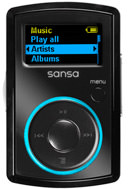
Some MP3 Player makers produce models with an innate ability to double as a voice recorder. This has been one of the biggest reasons why consumers go for these type of models over Apple’s iPod, as it has always lacked an innate ability to record any audio, and almost always is cheaper in price.
What’s Hot: The convenience of having an MP3 player and a recording device is what sells here. These types of players can not only handle files and MP3 playing great, and may even support video, but also have built-in internal microphones ready for recording right out of the box. What’s more, some of the recorders can record at pretty high bitrates, meaning the quality of the recordings turns out pretty nice. The all-in-one package appeal is what makes it for these.
What’s Not: Not all of these support external mics if you want to clip one onto the speaker, and additionally, suffer from poor battery life because of their use of AA or AAA batteries. Since the primary functionality of these units is for MP3 playing, the product and its hardware won’t be as dedicated to recording as some may want.
The Verdict: Great for beginners and users wanting to make basic recordings who don’t need the greatest quality or all the fancy bells and whistles and want a solid MP3 player with it. Recommended for beginners and easy personal recording.
Personal Digital Voice Recorder – $50 to $100
Here’s where pocket voice recording all started, with these types of personal recorders made by Olympus or Sony. Olympus originally came out with the microcassette back in the late 60s. Since then, Olympus has always had a name for audio “dictation,” or the act of recording a speech and even today, in the digital world, Olympus still maintains an image as a standard for recording with it’s digital voice recorders. Sony also offers some nice models, as well.
What’s Hot: The internal mics these things use are really great at picking up speeches, especially from loudspeakers. These things are made to record voices, often equipping stereo microphones and almost always offering a port for external mics with high quality bitrate recording. Some of them even have two different modes of recording you can switch between: placing the recorder close up to the speaker style or recording in a large hall with loudspeakers farther away from the speaker. Additionally, I have found them to have great battery life, even when running on AAAs.
What’s Not: The biggest downside to Olympus digital devices is that they record only in either DSS format, the Digital Speech Standard, a format developed by Olympus specifically for recording speech, or in WMA. Since most people want to end up with MP3 for sharing, this can be tricky to work with, although some Sony models can record in MP3. Also, it’s rare to find one of these with a rechargeable battery, so while they tend to last long, you still have to eventually replace them.
The Verdict: Personal voice recorders are definitely a great option if you want to step up to a more serious level of audio recording, but best to get one that does MP3 out of the box. Ideal for recording series of lectures or classes.

For serious audiophiles only. These babies pump out the best audio quality one can possibly get for the buck. Seriously, no joke, even with the amount you’d have to pay for one of these. Personally, I really like the MicroTrack II (pictured), while IbnAbeeOmar’s weapon of choice is the Zoom H4 Handy Recorder which he used to record the Yasir Qadhi interview on Beards. Also very popular is the Edirol R-09HR.
What’s Hot: The quality on professional recorders is simply unbeatable. I’ve used one a couple times and with the right combination of a microphone, the results were like that of a CD quality recording. Super crisp sound, minimal background noise picked up, and loads of options and inputs to mess around with. I recorded a Qari reciting Surah Qaf and when I listened to it I thought I was listening to Afasy from a purchased CD! Also, here is where you finally get models with built-in lithium ion batteries that you can plug in to charge more frequently. By far the cream of the crop.
What’s Not: Not all of these have built-in mics. That means you have to use an external mic all the time. On top of that, some of these models are meant for being plugged in from an audio mixer, meaning they don’t have what’s called phantom power. In other words, depending on the model you get, you may have issues finding the right type of microphone. But that’s all part of the fun in going “prosumer.”
The Verdict: There’s a reason why you’ll see the serious Muslims who are actively recording using these at events and conferences. Because they’re amazing. If you’re going pro to sell CDs, you simply cannot settle for less than one of these.
Recording Methods
One of the most common questions I get asked in regards to Islamic recordings is, “hey bro, how can I boost the volume of the Shaykh I recorded?” About 99% of the time, the answer lies in the method by which one recorded the lecture in the first place, where one can make or break the quality of a recording from poor to outstanding.
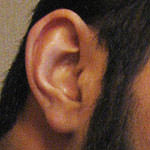
Before anything else, we need to understand that the human hearing system is by far the best microphone you will ever come across. This is the case not only because it’s better than any microphone you’ll ever come across, but that’s what we use as a frame of reference, and for our purposes what we will judge microphones on. In other words, the microphone was made to act like the human ear.
Since Allah (SWT) gave us an amazing sound reception system in our ears, we need to realize that just because we ourselves can hear the lecture properly from the farthest end of the room, doesn’t mean the microphone on your recorder can. You simply can’t compare microphones to the human ear, and that’s why it’s important to know the differences between different recording methods and which one is best for you.
On Table vs. On The Floor Methods – A Field Test (by ibnabeeomar)
There are two common methods to record using recorders with internal mics. One is placing the recorder near or close to the speaker, such as on a table at which they’re sitting, while the other is on the floor further away from the speaker, like during a khutbah where you may be a few rows back. We conducted a field test of the two methods to show the difference between the two, and also used three different types of recorders to display their audio quality.
MP3 Player w/ Recorder – Samsung YP-T9JQB 2 GB Digital Multimedia Player
Personal Digital Recorder – Olympus WS-300M 256 MB Digital Voice Recorder and Music Player
Professional Digital Recorder – Zoom H4 Handy Recorder
We performed the tests in a typical masjid setting, first placing the recorder on the table, and then on the floor, with the three recorders were running simultaneously. They were on a table while the Arabic text of the hadith was read, and later brought down to the floor during the English portion.
Pay careful attention to how much background noise is picked up. See how it sounds when someone is coughing in the background, when papers are moving around, or people are walking around in the back. Try to turn up your speakers as much as possible and try to listen to all the sounds in the recording except the actual voice, and see the quality that comes in from each type of recorder.
- Samsung (on table): [audio:http://muslimmatters.org/audio/rtest/Samsung(ontable).mp3]
- Olympus (on table): [audio:http://muslimmatters.org/audio/rtest/Olympus(ontable).mp3]
- Zoom (on table): [audio:http://muslimmatters.org/audio/rtest/Zoom(ontable).mp3]
Now for what is closer to a ‘khutbah’ setting – recording on the floor near the speaker.
- Samsung (on floor): [audio:http://muslimmatters.org/audio/rtest/Samsung(onfloor).mp3]
- Olympus (on floor): [audio:http://muslimmatters.org/audio/rtest/Olympus(onfloor).mp3]
- Zoom (on floor): [audio:http://muslimmatters.org/audio/rtest/Zoom(onfloor).mp3]
The up-close table method is much more audible and clearer, while the floor method sounds more muffled and difficult to distinguish. It literally sounds as if one is closer and the other is further, and this serves to show how microphones work versus human ears.
Also, notice that while Samsung MP3 player gets the job done, it suffers from lots of white noise (background noise). The Olympus’ recording quality is evidently much better than that of the Samsung’s, although, with a little bit of white noise still audible. The Zoom takes the cake and records with the crispest, richest sound, whether on the table or on the floor, making the differences between the models very clear.
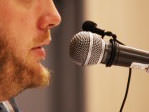
Nothing will beat having your speaker talk directly into a microphone, either by a lapel mic clipped directly onto him, or a microphone which he can speak into. Like it was mentioned in terms of nearness, using a direct mic means your speaker’s voice will be as close to the mic as possible, and since such mics are made to pick up voice that close, you’ll get the best quality recording.
Just think about it. The microphone is super close to the speaker, and the volume is adjusted so that even though it’s close, the speaker won’t be too loud. That means any other noises in the room take a seat compared to your speakers, and at a much lower volume. This makes the speaker’s voice clear, background noises minimal, and provides a listening experience that sounds the best.
Here’s an example of the difference between a direct mic versus a far mic. I have two tracks of the same talk by Yasir Qadhi, Journey of Worship, which I recorded for Wasat Studios at ISNA 2006. One is from an internal mic on the Panasonic DVX-100 camera I used to record the lecture, while the other is the mic he is speaking directly into recorded onto a professional recorder by IlmQuest. Here’s the same clip but with two different recorders.
- Internal mic: [audio:http://muslimmatters.org/audio/jow_comparison_internal_mic.mp3]
From the internal mic, Shaykh Yasir sounds echoey and further away, and in addition to lots of background noise, you can hear the coughing of the audience very clearly.
- Direct mic: [audio:http://muslimmatters.org/audio/jow_comparison_direct_mic.mp3]
With the direct mic, however, Shaykh Yasir’s voice is super crisp, with minimal background noise. Even the coughing from the audience is almost impossible to hear.
So from these tests, it’s clear a direct mic can’t be beat. If that’s not doable, then a recorder with an internal mic that’s placed closed to the speaker, either on a table if they’re sitting or on the minbar during a khutbah. And the method with the poorest quality is that of keeping it far away on the floor.
 Editing
Editing
The editing of audio is where one can either clean up the sound quality of their recording or make edits that can aid in its presentation.
Cleaning Up Background Noise
For quality sound on a recording, we already went over the different methods of recording and microphone placement. But you can take things a step further by cleaning up your recording on audio software programs.
The number one item that can be cleaned up is background noise. Background noise is additional sound captured on a recording during blank periods that come from outside the recorder. In other words, this is the “fuzz” or “hiss” you hear during the blank periods on your recording yet you don’t find on professionally recorded media. It’s also what you may remember from audio cassettes and you would try to reduce by pressing the “DD” Dolby Noise Reduction button and your player would partially eliminate.
Background noise can come from a variety of different sources. There may be powered machines turned on near your recording, such as a fan or air conditioning/heating unit or a computer or laptop of some sort. Usually it comes from these types of “outside” sources. Sometimes, though not often, certain recorders themselves by default add a noticeable amount of white noise, background noise that comes sometimes from the recorder itself.
Basic overall rule: the better quality (and pricier) the recorder is, the less background noise you will get from the recorder itself.
Most audio software have a plug-in or effect that processes the removal of background noise. Sometimes it’s called white noise removal, other times it may be called noise reduction, hiss removal, or something similar to any of the terms mentioned.
The keys to background noise removal are three. Firstly, focus on a good, solid, direct recording method to make your recording. This will make the most difference in your work. Second, try your best to remove any noise makers in the background. This may be tough, because in some scenarios you can’t necessarily turn off the local masjid or university room’s ventilation system, but try your best to avoid these if you can.
Thirdly, and this is key, is to only remove a necessary amount of background noise. If you had a solid crisp recording, you only need the program to remove just a bit of white noise.
If your recording isn’t that great and has lots of noises competing with your speaker, however, you can try to intensify background noise removal, but that will only intensify the removal of the voice of your speaker (which it’s why it’s key to choose a good recording method.) I’ve heard lectures and seen videos before where I can tell, “whoever edited this did way too heavy of white noise removal,” making the speakers voice sound muffled. Remove just a bit, and try your best to make it sound natural, not processed.
Audio Levels and Gain
Too often have we heard Islamic talks where either the speaker’s voice is way too low and quiet, or is blaring so loud it makes your ears bleed. This happens because either the gain (think microphone’s intake volume) is too high or the speaker speaks way too close/far to/from the mic, or simply because no one bothered to edit the audio levels.
In most editors, they’ll give show your recording’s soundwave levels going from 0.0 to 1.0 up and to -1.0 going down. I have found that, ideally, you want the levels to peak between 0.5 and -0.5. Not only is this what I’ve noticed on professional recordings of non-Islamic media, but also from professional Qur’an and lecture recordings, as well.
So what you want to do is find a good editing software of your liking and mess with the gain and volume settings to adjust your recording to good audio levels.
General rule of thumb? Think of it like Goldilocks and the Three Bears.

This one is too high.

This one is too low.
[audio:http://muslimmatters.org/wp-content/uploads/2009/07/audio_level_good.mp3]
And this one’s juuuuust right!

Here is where lots of Islamic audio suffers. Editing out mistakes. Too often have we heard recordings where there are edits that could have been made, but aren’t.
For example, I heard a CD of a talk delivered by Shaykh Yaser Birjas in which he referenced Ibn Al-Qayyim, may Allah have mercy on his soul. Shaykh Yaser accidentally began by saying “Ibn Tayimiyyah rahimu..,” caught himself, and then corrected himself by saying “Ibn Al-Qayyim rahimihullah said…” and moved on.
There is absolutely no reason why we should hear that mistake on a recording. Especially not on one that is sold in CD format all over the nation at conferences and lectures. That small mistake could have easily been edited on even the most basic audio editing software. If it were, it would have added to the quality of the presentation (and in this case, the product), removing any noticeable defects. Instead, it was left in for even the casual user to notice.
Admittedly, it’s a small mistake. But that’s the whole point. Not only are “the small things” what distinguishes between average and high quality, it’s their trivial nature in the first place that makes one ask, “why wasn’t something this small and easy to fix corrected?”
Now for your recording, do you need to edit out all mistakes your speaker makes in your recording? Not necessarily, because it depends on what your target audience is.
If you are recording your private sittings with your local Shaykh where the talk is informal, there are random breaks, interruptions for Q&A, phone calls from the Shaykh’s wife, etc., it’s only your circle of fellow students that will probably use it so editing out small mistakes is probably not a biggie. But if you plan to go public and put a picture of quality behind your recording, then this is definitely something you want to consider.
Either way, like with all things in our life and especially so with Da’wah, we want to implement Iḥsān , or excellence, in our efforts. While editing out mistakes or breaks in your recording may not be an absolute necessity, it certainly would be a sign of high quality effort in your already high quality recording.
Software
Since are dozens of audio editing software out there for you to choose from in performing edits, you might find yourself wondering which one is the best for you. There’s a few things to consider.
Price
No doubt the thought of paying over a hundred bucks for audio editing software is daunting when compared to downloading an open source alternative for absolutely free. However, you will find that generally speaking, you get what you pay for.
That’s why popular open source (free) programs might not have as good audio effects, such as white noise reduction or echo/reverb effects for Qur’an recitation, as a program that can cause $200 holes in your wallet. But, again, you get what you pay for.
With that said, here’re some recommendations based on what may be your needs:

Audacity is probably the most popular choice for free audio programs available on the Internet. Not only does it cost nothig, it’s open source, which allows others to write up plug-ins for it. This is a great choice for someone who needs a program that does simple editing and white noise clean up.

I have been using Goldwave for my audio editing needs since 1997 when I was still in middle school. It is one of the easiest to use and has an excellent white noise reduction plugin and I find is hard to beat. It’s not as well known as some of the other ones out there, but as my personal favorite, I’d definitely recommend it. It even allows you to buy a lifetime $40 key which you can use on any system you choose. Only con I can think of: not very good echo/reverb effects for Qur’anic recitation.

Sound Forge is for the serious audio editor that wants to step up editing a notch. It not only processes at great speeds, but it’s very streamlined and offers what I have tested to be the best echo/reverb plug-in out there. I was able to turn a local recording of a Qari into what sounded like a professional studio quality Qur’anic recording from Jordan with the use of its built-in Reverb effect. For most Islamic talk purposes, the $200 version is unnecessary, as a lot of the features are geared towards video syncing or music. Go for Sony Audio Studio, the $50 of Sound Forge. It’s just as great and comes with the excellent Reverb effect.

When you go Adobe, you’re basically going as pro as you probably will ever get. I have used Audition only a few times, but I have noticed that this is the choice of IlmQuest and EmanRush Audio when they record AlMaghrib seminars. Its benefits are probably suitable to only the highest and most professional needs out there, such as batch processing, creating and running macros, and providing wide db ranges. I would say only if you plan to produce super high quality recordings to produce onto CD for sales purposes should you consider this software.
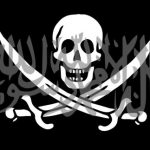
You might be thinking, “forget the prices and thanks for the suggestions, I’ll just download the cracked versions of these software from the torrents.” Before you continue on this thought, I would like to warn those of you who intend to do this.
You’re performing Islamic work with this software, not editing your own personal music collection or whatever it is that you might use it for. Therefore, you want to think twice about using something that is considered stolen for the purposes spreading Islam. Would you steal audio recorders from the electronics store to record your Islamic talks? Of course not, that’s out of the question, right?
Then why is it okay to steal software, which requires purchasing just like audio hardware, to edit Islamic talks? Just because it’s mere digital data and, thus, easier to steal, doesn’t make it okay.
How To Pay For Software
There are alternatives to stealing. Alhamdulillah, I myself was able to purchase a $1300 Adobe Creative Suite CS3 collection in 2007 for absolutely free. Not only did I use my student discount to knock the price down to $600, I found someone willing to donate the entire price because they knew it was going to be used for Da’wah. Now all the Photoshop, Premiere, and After Effects work I did was not only inshaAllah awarded to that generous donor, I don’t have to feel guilty or be held accountable for as well.
If you’re recording for a masjid, MSA, or organization, talk to them. I’m sure they’ll hook you up with an easy $50 to pay for software. But it requires you being proactive and not telling them “I got it, don’t worry” when in reality you’re doing Islamic work on stolen software.
Make du’a, be proactive and look for help, and Allah will find you a way to pay for the software inshaAllah.
Want to read more on the topic? See Using Pirated Software For Da’wah Purposes.
Conclusion
Recording Islamic talks can be a great form of Da’wah, and by following the tips in this tutorial, you can pump out some quality recordings for you and many others to benefit from. We hope you were able to benefit from this tutorial and truly enjoyed writing this piece, but now it’s your turn.
There are definitely Muslim audiophiles out there who can offer some solid piece of advice themselves. If you’re one of them, what advice can you offer for everyone who wants to record Islamic audio? We’d love to hear what you have to say.
Until then, happy recording. :)
Keep supporting MuslimMatters for the sake of Allah
Alhamdulillah, we're at over 850 supporters. Help us get to 900 supporters this month. All it takes is a small gift from a reader like you to keep us going, for just $2 / month.
The Prophet (SAW) has taught us the best of deeds are those that done consistently, even if they are small. Click here to support MuslimMatters with a monthly donation of $2 per month. Set it and collect blessings from Allah (swt) for the khayr you're supporting without thinking about it.
SaqibSaab is an average Desi Muslim guy living in Chicago. He enjoys videography and design as side hobbies, and helps out with AlMaghrib Institute in Chicago, Wasat Studios, and other projects here and there. His go-around vehicle is a 2007 Volkswagen Jetta 5-speed Wolfburg Edition. Originally born in Michigan, he and his wife reside in Chicagoland with his parents who come from Bangalore, India. He blogs personally at SaqibSaab.com.


Quebec Introduces Bill To Ban Prayer Rooms On College Campuses

Far Away [Part 2] – Alone

Restoring Balance In An Individualized Society: The Islamic Perspective on Parent-Child Relationships

The Limits Of Obedience In Marriage: A Hanafi Legal Perspective

Kuwait Strips Prominent Thinker Tariq Suwaidan Of Citizenship

Op-Ed – When Islamophobes Try To Intimidate Us, They Underestimate Our Resolve: A Call to Stand With America’s Muslim Students

Who’s Afraid Of Dr. Naledi Pandor? – Zionist Panic and a Visa Revoked

Owning Our Stories: The Importance Of Latino Muslim Narratives

The Hunger Crisis: Reflections Of An American Muslim

Ahmed Al-Ahmed And The Meaning Of Courage

[Dhul Hijjah Series] Calling Upon the Divine: The Art of Du’a (Part 1)

IOK Ramadan 2025: Four Steps | Sh Zaid Khan

IOK Ramadan 2025: Do Your Best | Sh Zaid Khan

IOK Ramadan 2025: Giving Preference to Others | Sh Zaid Khan

IOK Ramadan 2025: Which Group Are We In? | Sh Zaid Khan
Trending
-
#Life3 weeks ago
Op-Ed – When Islamophobes Try To Intimidate Us, They Underestimate Our Resolve: A Call to Stand With America’s Muslim Students
-
#Current Affairs4 weeks ago
Who’s Afraid Of Dr. Naledi Pandor? – Zionist Panic and a Visa Revoked
-
#Culture1 month ago
K-Pop Demon Hunters: Certainly Not for Kids
-
#Current Affairs1 month ago
November 29 Is The International Day Of Solidarity With The Palestinian People – What Will You Do?
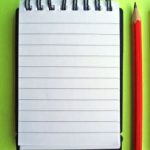 Logistical Tips
Logistical Tips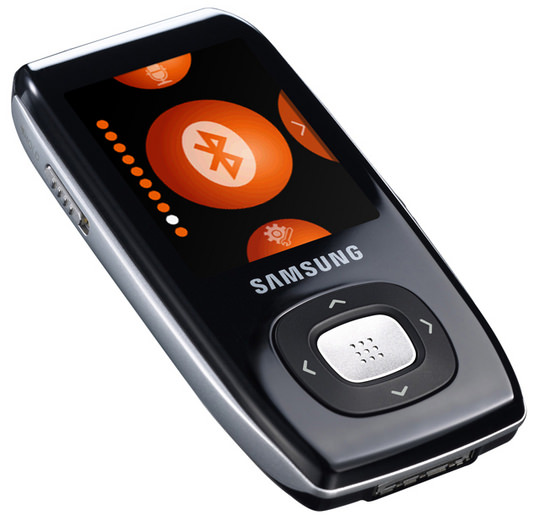


 Editing
Editing












Ameera
August 10, 2009 at 12:48 AM
JazakAllah, this is really good stuff, I love the recordings that you’ve put up as samples. I was wondering if you could put up a tutotrial sometime on video editing as well because for home users who put together clips for sites like Youtube, that would be very useful InshAllah.
Ah, and the piracy check was really valuable advice… really needed it. JazakAllah!
Amad
August 10, 2009 at 12:50 AM
talk about having SOLID & useful information on MM! Great job!
ihafidh
August 10, 2009 at 4:52 AM
Jazak Allah Khair for a great article. I do some recording and this is very useful.
I would also have liked to see a discussion on the different types of mics: prices and where to buy them; clip-on, hand held, over the ear, etc.
Zi
August 10, 2009 at 7:02 AM
Salam..
Excellent piece of work, masha’Allah – just what I was looking for!
Could you do one on Video recording next please?
Zi
slaveofAllah4lyf
August 10, 2009 at 8:42 AM
Assalaam Alaikum Wa Rahmatullahi Wa Barakatuh………..
about the piracy stuff….i wud say tht 4 those hu cannot afford buying softwares…..they can download audacity (google it up)….its free….n better thn most paid softwares…
Ma’asalama
slaveofAllah4lyf
August 10, 2009 at 8:46 AM
oops didnt see audacity already is there in the post…lol
slaveofAllah4lyf
August 10, 2009 at 8:47 AM
n btw jazakAllah khair 4 da gr8 article…
MR
August 10, 2009 at 10:08 AM
Last step
Submit to halaltube
or send to me to upload and add!
:-D
iman
August 10, 2009 at 7:37 PM
I’ve tried many times to submit material to halaltube and it never goes up. so I gave up on it.
MR
August 11, 2009 at 8:55 AM
If it’s a new speaker then it’ll take a very long time, because I need to find out who the person is.
Imtiaz
August 10, 2009 at 11:41 AM
I normally have a very high quality sony lapel stereo mic and recently i used the Olympus 1Gig recorder… The quality to me is unbelievable. I edit it with Audacity… not much stress and pretty quick…
FYI.. i used to spend $300+ with Sony MiniDisc and almost 3 steps to get the audio into mp3 from atrac to wave to MP3…. now… with less then $100 ..and 10 mins….
abdullah
August 12, 2009 at 7:23 AM
salam akhi
which Olympus model would you recommend? and did u use the sony stereo with that? if so which model would you recommend?
was-salam
Imtiaz
August 12, 2009 at 10:02 PM
this is the recorder
http://www.olympusamerica.com/cpg_section/cpg_archived_product_details.asp?fl=2&id=1322
The Microphone I use that attaches to speaker
http://www.neobits.com/sony_-_ecm-cs10_-_stereo_lapel_business_microphone_p40241.html?atc=fgl
sorry for the late response
abdullah
August 13, 2009 at 10:49 AM
salam
jazakallahu khairan akhi. does it record in mp3 format or do i have to record in wma and then convert to mp3?
imtiaz
August 14, 2009 at 2:47 AM
your going to have to convert from WMA to MP3 :|
Khan
August 10, 2009 at 2:00 PM
How does one upload audio files to blogs (such as blogspot) ?
Enosh
August 10, 2009 at 5:17 PM
Could you also talk about video as well as audio recording. And how to best pull off both, cuz sometimes the audio quality just captured on a handheld video recorder isnt the best, should we be using a seperate audio recorder and then when editing lace them together? How would you suggest doing audio and video?
Al Madrasi
August 10, 2009 at 6:35 PM
Beautiful article. Amazing and I;ve been looking for something similar to this for a while
Jazakallah khairan bros.
mystrugglewithin
August 10, 2009 at 9:14 PM
Jak!
Bro. Nouman Ali Khan once said, “Whosoever is recording me, please don’t share it. Here is my reason: if people would find this class’s audio online and they’ll not attend it physically. And, I am pretty much sure that most of them just think that they’ll listen to those recordings someday, but they never do.. So, please don’t share it, and within ** weeks, Bayyaniah will post high quality audio lectures, accessible to everyone.”
I sort of agree with this. I wish all dawah Institutes manage such a repository of HD audio and video recordings of their lectures.. and make it available *free* .. just a side note – I am not against Al-maghrib’s model.. I wish I could join the team someday.. Then, I heard Shaykh Anwar Awlaki suggesting that all Daaees should be highly paid. They should be paid just like a top notch engineer or doctor. So much so that, a software engineer should have a serious choice of either practicing miserable java or learning and teaching classical Arabic! So eventually, all of al-magirb’s stuff should be made available for freee (I hope someone is listening :D).
@Halaltube — I am really, really impressed by this brother’s service. He is the reason why I stopped listening to music while stuck in traffic and preferred Shaykh Anwar Awlaki’s series on Umar RA and Abu Bakr RA!
Just few random thoughts but again, amazing tutorial, Jazakallah Khayrum!
Seeker of 'Ilm
August 11, 2009 at 5:20 AM
Salaam,
I have another suggestion about a recording device. I use an iPod for Islamic audio/video, so not built-in mic there… but I have the Penman ‘Iqra CQ4 Digital Qur’an which does a fairly good job. It records up to 128 kbps, and the battery is a beast (it lasts quite long… built-in lithium ion). The CQ5 is the newer version, with multiple recitations rather that only one. Also, this also has an mp3 player! Enough advertising :)
Here’s the manufacturer: http://www.penmanusa.com/cq5.html
Here’s one seller: http://islamicbookstore.com/a5078.html
Acquisiti
August 11, 2009 at 7:43 AM
JazakAllahu Khair brother, this is so beneficial and simple to understand. May Allah SWT make it a great source of Sadqa-e-Jariya for you. Ameen.
Can you do a similar ‘how to’ for video recordings and editings, like your experience from your last post…
SaqibSaab
August 11, 2009 at 10:44 AM
JazakAllah khair to everyone, I’m glad brothers and sisters are benefiting from this article.
I’m getting a lot of requests for a tutorial on video recording. InshaAllah one day… stay tuned! :)
Yasir Qadhi
August 11, 2009 at 11:21 AM
Excellent article… I learned a lot myself :)
yq
Naeem
August 12, 2009 at 1:02 PM
What about using the iPhone as a recording device ? Would it suffice?
ibnabeeomar
August 13, 2009 at 3:43 PM
iphone is actually surprisingly good quality. ive recorded a khutbah by keeping it in my shirt pocket and it came out better than the olympus or mp3 recorders above.
JUST REMEMBER: if you are recording w/iphone, put it in airplane mode!! that way you dont get txt msg or email or phone alerts during the recording.
Naeem
August 13, 2009 at 8:00 PM
Is there any special app used for recording or just the regular one that the iPhone provides?
ibnabeeomar
August 13, 2009 at 10:41 PM
you can use voice memos, but you can only get audio after syncing.
if you download griffin italk app, then its easier. the griffin website has a desktop client, so when your iphone and PC are on the same wifi, it will transfer the audios to your PC.
Zi
August 15, 2009 at 5:44 PM
I found this useful for Iphone recording:
ibnabeeomar
August 13, 2009 at 3:46 PM
the 2 big items on my wishlist:
New Zoom H4N
http://www.amazon.com/Zoom-Handy-Portable-Digital-Recorder/dp/B001QWBM62/ref=wl_it_dp?ie=UTF8&coliid=I1BWCOYENPDA8F&colid=32Q38WQHPJQFB
Audio Technica Lavalier mic to go with it:
http://www.amazon.com/Audio-Technica-AT831R-Cardioid-Condenser-Microphone/dp/B000ZLV5P8/ref=wl_it_dp?ie=UTF8&coliid=I3FPD1B5BZJJCP&colid=32Q38WQHPJQFB
Abu Zayd
August 14, 2009 at 12:17 AM
Excellent article. A few quick questions, as I’ve been in the audio recording scene for some time (used to use Sony high MD devices but recently bought the Zoom H4N, and Goldwave for software editing):
1. When producing mp3’s, which bitrate would you recommend (96K, 112K, 256K, etc)? The higher the rate, the larger the file size, so what do you find is a good balance between keeping files small and the quality high?
2. I personally prefer deep, resonating sounds (particuarly for Quran) but most of these recorders produce very crisp sounds that dont have that richness. I’ve tried tweaking many settings (reverb, echo, etc.) to no avail. Any advice?
Jazakallahu khairan
SaqibSaab
August 14, 2009 at 11:24 AM
@Abu Zayd
Maybe you can try messing with equalizer settings, adding bass?
Besides that, my best recording of Qur’an was on a MicroTrack II using the included built in lapel mic. We recorded Shaykh Ismael Qadi from Napeville, IL reciting Surah Kahf in an empty masullah. Using just the MT II and its mic, followed by some reverb effects using Sony Audio Studio, we got this as a result:
http://www.wasatstudios.com/audio/iq/ismael_qadhi_kahf_preview.mp3
MashaAllah it turned out great, but it was also really rich in bass. So much, in fact, I actually had to turn it down a notch.
Driton
April 11, 2015 at 12:02 PM
Assalamu alaikum brother Saqib,
JazakAllah khair for this very beneficial post.
Can I ask specifically for Qur’an what kind of effect settings in reverb and echo did you use. I have Adobe Audition but i’m a designer and have no idea on how to adjust settings. I have some beautiful recordings but I just need to add that echo/ambient effect. Could you please either let me know how to do it or point me to the right direction/tutorial.
I am after exactly the same effect you’ve done on your example above.
UesSalam, Driton
Jah Rastafari
August 14, 2009 at 11:16 AM
I’m a little disappointed you didnt mention the Edirol R-09HR. That is a mighty fine recorder, with incredible built in mics. I use it to not only record my mixes, but also live performances as well as lectures. The audio comes out clean and pending the requirements (ie, CD, online distribution, small memory cards, etc.) I can change up the format and quality settings rather easily. Yes its pricey, but it def. is better (IMHO) then the microtrack II.
Anyway – let me emphasis something here – CHECK YOUR LEVELS. That doesn’t just mean the level of something coming into the recorder, but also the recording level on the device. Make sure its balanced. You can’t turn up the recording level on the device if the master output level is low and expect the recording to be clean or visa versa. Sometimes its out of your control, but if you are like SaqibSaab you are usually the guy also running the boards.
I remember a DJIng friend of mine mentioned that back in the days of recording mixtapes on actual cassette tapes (Who remembers the High Bias Maxell XL II) you had to turn up the mixer and the tape recorder level high enough (without peaking) to over come the inherent hissing sounds of the tape. I’ve tried this on my own mixes on a digital recorder and the same principle still holds. Nothing worse then having a mix thats recorded too low.
On Qu’arn recordings – What do Quarn Reciters and Billie Holiday have in common? Vocal Ability and texture! If you are going to spend money and invest time into recording such material, Please Please Please do not apply cheesy echo effects – esp. if you didn’t record it in some cave or some acoustically engineered masjid. It just sounds bad to have it reverb 50 times like you are trying to emphasis the seriousness or power of the words. It’ll come through in a clear recording and one that captures the subtleness in the voice.
P.S. I co-sign completely on Audacity. Great audio editor. and Open Source is the new Zabiha. Get with it folks!
SaqibSaab
August 14, 2009 at 11:29 AM
Totally forgot about the Edirol! And I used it (PK’s), in addition to the original MicroTrack (Sharif’s) at ISNA 2007, so I don’t know why I didn’t think of it. Good thing I got Jah to watch my back. I have added it into the post now.
ihafidh
August 14, 2009 at 11:43 AM
Assalam Alaikum,
I know this is off topic and I hope that you do not get offended by my question but is it appropriate to use the name “jah rastafari”? In the rastafari religion they refer this to the last emperor of Ethiopia and they believe him to be a god.
Nahyan
August 16, 2009 at 12:16 AM
fantastic article brothers,
I’m definitely going to be referring back to it when playing around with this stuff.
Jazakallahukhair,
Nahyan
Abu Ayub
December 15, 2009 at 5:16 AM
Jazakallah Khair Brothers just the article I have been looking for.
taha
April 15, 2010 at 10:54 AM
which is the best mobile phone that has a good in-built memory you could buy for recording khutbas and how is i phone basic 8gb for that?
Islamic News Daily
July 20, 2010 at 7:10 AM
Jazakallah Khair, nice sharing.
Asfahaan
August 11, 2010 at 4:27 PM
Assalamalikum brother,
Which MIC is good to use an direct mic (we were trying to achieve the quality which you have mashallah achieved using a direct mic)!
Jazakallah Khair,
Asfahaan
New Zealand
hafiz abdul karim afghani
January 19, 2014 at 9:29 AM
Dear Sir,
As Salam O Alaikum my name is Abdul kareem from afghanistan i am a hafiz Quran ALHAMDULILLAH, my father works in germany and i live in dubai he requested me to send him a CD of tilawat e Quran by me for him to listen i am not aware of any software or device that can record and copy my tilawat on a CD please advice i love my dad a lot and this is his wish to hear my tilawat whenever he likes and i want to fulfill his wish
2cupsoftech
November 26, 2014 at 9:28 PM
I use Audacity (free) for normalizing audio or removing background noise. The audio is recorded with:
$100: Zoom H1
$47: Giant Squid Audio Lab Omnidirectional Microphone
The video is recorded with (if you want to step up the video recording just buy a better camcorder):
$190 (bought refurbished): Sony HDR-CX380/B High Definition Handycam Camcorder
The final editing is done with iMovie (comes free on Mac). Here is a result with the above combination:
https://www.youtube.com/watch?v=F1Zbd0S8ft4
The output file from iMovie is huge so I compress that using HandBrake (WebOptimized option). I don’t think you need to buy anything else or spend more money.
The main thing you need to spend some time is learning (youtubing, googling) the fundamentals of quality audio recording. If you have access to audio-mixer then you could also pick up audio from the mixer using an audio cable like RCA to 3.5mm or 1.8inch to 3.5mm (or a combination of those)
If any further question please reach out to me through my blog.